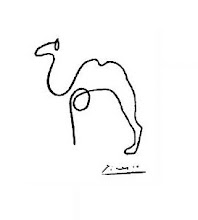
The author of this little book is James, who identifies himself as “a bondservant of God and of the Lord Jesus Christ” (1:1).
In the New Testament there are four men recorded with this same name:
First there was James, son of Zebedee and brother of John - A fisherman called by Christ (Matthew 4:17-22) who later became an apostle (Matthew 10:2). He and his brother John were called the “Sons of Thunder” apparently because of their recklessness (cf. Mark 3:17 with Luke 9:51-56). Herod killed this James in 44 A.D. (Acts 12:1-2). This James’ mother requested priority kingdom seating for her boys. More on this later. Maybe.
Our second James is the son of Alphaeus - another of the apostles (Matthew 10:3; Acts 1:12). Very little is known about him. He may or may not be “James the younger,” whose mother, Mary, was one of the women at Jesus’ crucifixion and tomb (Matthew 27:56; Mark 15:40; 16:1; Luke 24:10). In John 19: 25, this Mary is called the wife of Cleophas, perhaps to be identified with Alphaeus.
Third is James, father of Judas the apostle – he is even more indistinct and obscure. One of the few references to him is Luke 6:16.
Fourth, and finally, we look at James, the brother of our Lord. He was a half-brother of our Lord (Matthew 13:55), who apparently did not believe in his brother Jesus at the start (John 7:5). This James became a disciple following Christ’s resurrection (1 Corinthians 15:7; Acts 1:14). This James grew in importance in leadership in the church at Jerusalem (Galatians 2:9). As specific verification of his leadership role, Peter sent him an individual message subsequent to his own miraculous release from prison (Acts 12:17). James also played a key role in the conference at Jerusalem (Acts 15:13-33), and Paul brought him greetings upon arriving at Jerusalem (Acts 21:18-19).
“James, the Lord’s brother” (Galatians 1:19) is most likely the author of this short book. Tradition describes James as a man of prayer, which may explain the emphasis on prayer in his letter. It was said that he prayed so much; his knees were as hard as those on a camel – camel knees. He was martyred in 62 A.D., either by being thrown down from the temple, or by being beaten to death with clubs – some say the “fuller’s club.”* The account is that as he was dying, he prayed as did his Lord Jesus, “Father, forgive them, for they know not what they do.”
The epistle is addressed to “the twelve tribes which are scattered abroad” (1:1). This logically leads the reader to think of Jews (Acts 26:6-7) living outside the land of Palestine. After the Assyrian and Babylonian captivities, many Jews were scattered throughout different nations (Acts 2:5-11). While they were Jews by birth and heritage, this writing makes it clear that they were also brothers in the Lord. Therefore, they were Jewish Christians. A total of nineteen times James calls them “brethren” and at least one time he certainly means those who were brethren “in the Lord” (2:1).
It seems as if many, if not most, of these Jewish Christians were materially poor and therefore exploited. Being Jews, they would likely be rejected by the Gentiles. To compound this situation, as Jewish Christians, they would also be ostracized by many of their own countrymen. The epistle suggests that most of these Christians were being oppressed by the rich (2:6-7). As the letter is not addressed to a distinct church or certain individual, it has been categorized a “General” epistle as are the letters of 1 and 2 Peter, 1 John, and Jude.
As there is no mention of the Jerusalem conference recorded in Acts 15 (A.D. 49), and there is the use of the word “synagogue” (assembly, 2:2), A.D. 48-50 is the date commonly given for this epistle. This would make it the first book of the New Testament written. If James, the Lord’s brother, is the author, then he in all probability wrote it at Jerusalem. Most Biblical scholars generally agree upon these last two statements as factual.
The epistle deals with a diversity of themes. An emphasis is placed upon the practical aspects of the Christian life. Some of the themes include the behavior of the Christian during trials and temptations, practicing pure religion, perceiving and accepting the relationship between faith and works, the proper use of the tongue (speech) and demonstration of true wisdom, being a friend of God rather than a friend of the world, and the value of the virtues of humility, patience and the practice of prayer.
While these many themes may appear on the surface to be unrelated and disconnected, they are in fact central to the growth and development of the Christian. Therefore, it is thought that James’ over-arching purpose in writing was to instruct the Christians concerning true and practical religion.
In this epistle is a loud and clear call for the saints to be doers of the Word. James makes an appeal to display a living faith through the Christian’s works. In 108 verses, there are 54 specific commands, causing some scholars to identify James as “the Amos of the New Testament.”*
The key verse of the book is commonly accepted to be James 1:22: “But be doers of the word, and not hearers only, deceiving yourselves.”
These are my findings from my own study. I am not writing a scholarly treatment of the epistle, just some hopefully practical observations that can be used by this blog's readers.














6 comments:
I have also been impressed with the fact that James, half brother of Christ Jesus, was such a man of prayer as to have been dubbed "Old Camel Knees". He watched the Lord live, minister, die, arise, and ascend - and witnessed many of the miracles and firsthand wisdom gifted by the Christ.
I suppose I am most impressed with the devotion and willingness to sacrifice that this "homie" brought in homage to the one he had apparently initially rejected. And I find myself wondering about his other siblings - were they similarly converted to worship of the one they grew up with? Perhaps we can all ask one day soon; after the earthquakes and famines and such.
Bro Mike
Oi! Such a face!
Lets be found on our knees praying in Jesus Name to stand before men
Thank you so much for this information on the People named James in the Bible. I loved the article. I also liked Michael’s response. I can hardly wait to be with all our brothers and sisters in Christ. To hear all of the great things the Lord has done in all our lives. I think though we will all spend the greatest part of eternity just enjoying knowing and being part of the family of God. Spending our time with our Lord Jesus, not as we are now, seeing through a glass darkly. Thank you.
Wonderful information. Excellent work. More useful to many Bible aspirants for their study. Waiting for more study from you
Amazing commitment to talking to God! What a great man and desire to be in God’s presence.
Post a Comment